Do you have a packet of rice papers in your pantry or plan to buy some? I’ll show you everything step by step and answer all your questions about how to use rice paper wrappers.
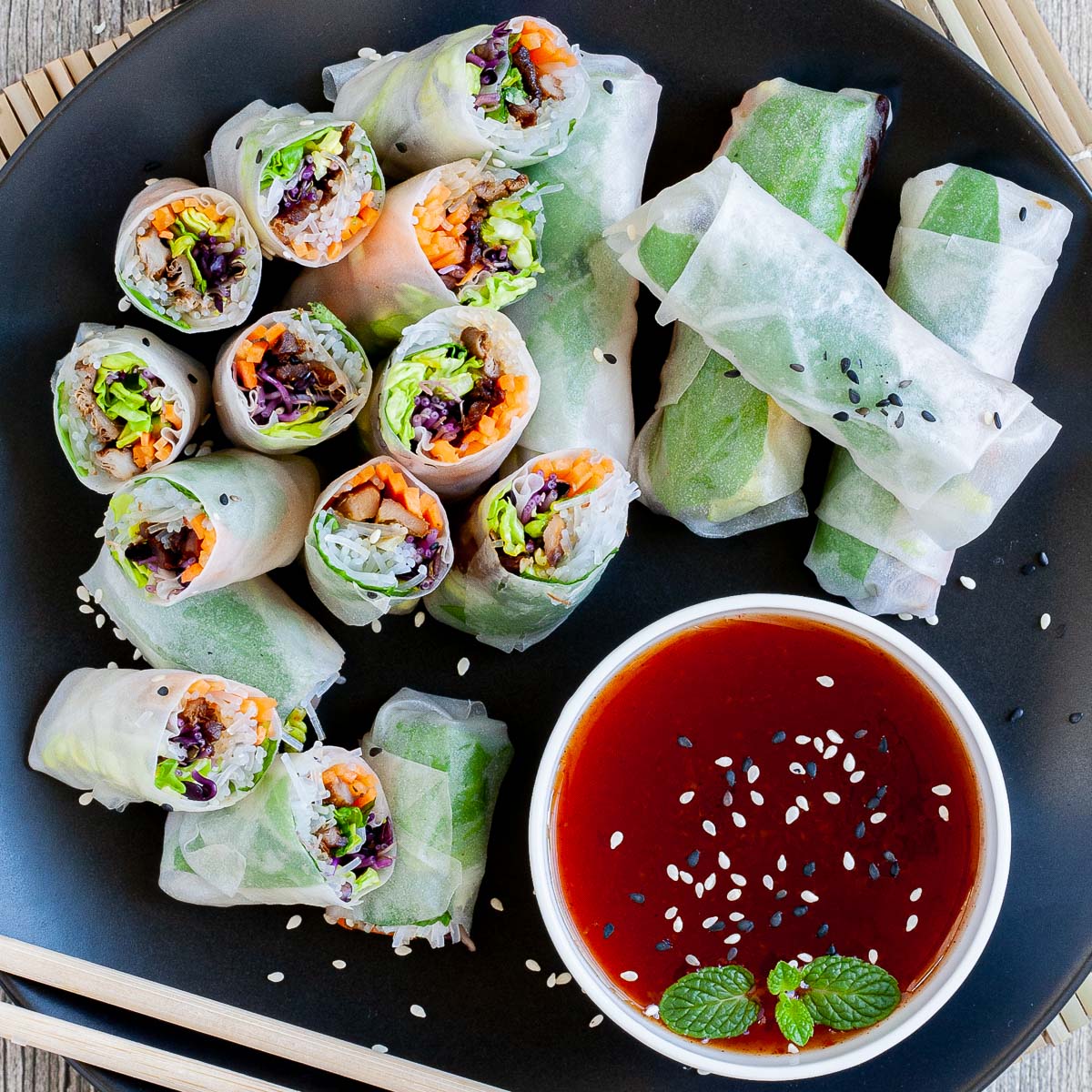
Jump to:
What are rice paper wrappers?
If you have ever tried a summer or salad roll at a Vietnamese restaurant, you have had a rice paper wrapper.
These wrappers are incredibly thin and traditionally made from rice, water, and salt. Nowadays, tapioca starch is often added to make it thinner, and easier to soften and roll.
They can be filled with almost anything and are almost transparent, allowing you to see the filling inside. Plus, they have a pleasant chewy texture.
Rice paper wrappers are most commonly filled with shrimp, pork, fresh vegetables, and noodles, but you can also use them to wrap other unconventional ingredients as well which makes this quite versatile.
Companies may use different names for it, though. If you come across one of these from the below list, rest assured they are talking about the same thing.
- rice papers
- rice wrappers
- rice wafers
- rice paper wrappers
- bánh tráng (Vietnamese name)
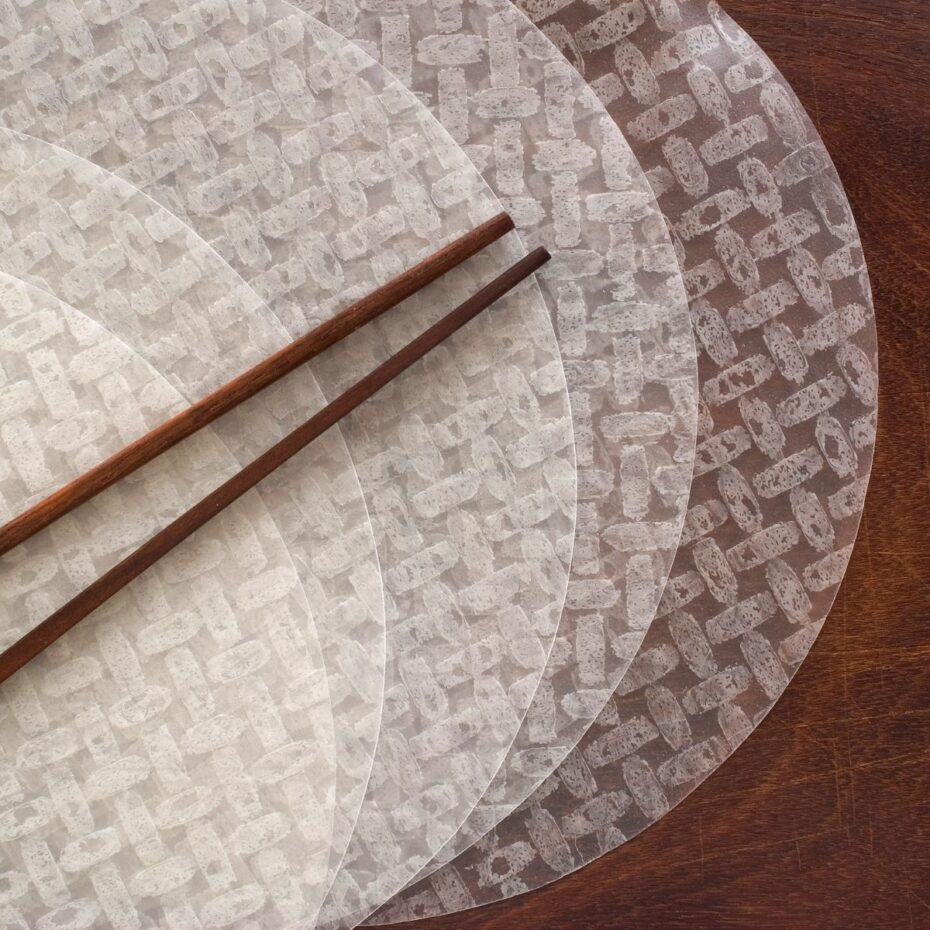
Rice paper ingredients and method
Traditionally, they are made of rice, water, and salt. Here is how they make rice paper by hand the authentic way. Let me keep it simple and explain it quickly.
It begins with high-quality rice. The rice is soaked in water for several hours until it becomes soft. It is then ground into a fine paste. This paste is mixed with water and salt to form a thin batter.
The batter is then spread thinly on a cloth that is stretched over a pot of boiling water. The steam from the water cooks the batter into a thin sheet.
This sheet is then carefully lifted off the cloth and placed on a bamboo mat to dry. The drying process can take anywhere from a few hours to a full day, depending on the humidity and temperature.
Once the rice paper has dried, it is peeled off the bamboo mat and cut into circular shapes. These circles are then packaged and sold as rice paper wrappers.
This video shows a more industrialized approach, though.
You can also try making them at home in a less-than-traditional way. Here is an easy-to-follow homemade rice paper recipe using rice flour, potato starch, salt, and water.
You can make one in a microwave in a nick of time if you are up for it.
Where can you buy them?
If you’re looking for rice paper wrappers, you may be able to find them at your local grocery or health food store’s International food aisle.
However, the best selection is typically found at Vietnamese or Chinese food markets.
Alternatively, you can also consider looking online to find the wrappers you need.
Here are the 7 most common brands you can find to buy. They use a mix of rice and tapioca starch which would be important for how you need to handle them.
Tip: Try to avoid products with 100% tapioca as they are super thin and really hard to work with!
Tips for buying rice paper wrappers
- Try to avoid products with 100% tapioca as they are super thin and really hard to work with! Instead, opt for wrappers made with rice or a combination of rice and tapioca.
- If you take a look at the packaging, you should see transparent, thin, round papers. If what you see is yellow, opaque, and square-shaped, then those are not rice papers but Chinese wheat flour spring roll wrappers. Don’t be surprised if you get confused, there are 9 rice paper alternatives.
- Rice paper wrappers are generally gluten-free, though some packages may list wheat as an ingredient due to translation errors.
- If you are unsure which size of wrapper to choose, it’s recommended to go with the 8 ½-inch wrappers, as they tend to be the easiest to work with.
- When selecting a brand of rice paper wrappers, look for the Three Ladies brand or one with a red rose on the label. These brands have a good reputation for quality and are widely used.
- If there are multiple options available, it’s suggested to choose the most expensive option. Keep in mind that rice paper wrappers are generally affordable, so spending an extra 50 cents for a higher quality option is a reasonable investment.
How to store rice paper
Unopened: Unopened packages can be stored in your pantry. No need to put them in the fridge.
Opened: If you open a package but don’t use all of it, transfer the rest to an airtight container or large Ziploc bag. In high-humidity areas, it can stick together if stored in open air.
Handling note: Always dry your hands before taking a rice paper from the package. Wet hands will activate them and they will stick together.
How to use rice paper wrappers
Wrapping rice paper is an easy task, just as easy as wrapping a burrito. With practice, you can get better at it. However, it’s worth noting that they don’t have to be perfect!
Rice paper is sold in dried sheets, and to make them more pliable for rolling, you will need to soften them.
How to soften rice paper wrappers
Softening rice paper wrappers is an essential step in preparing vegan recipes like spring rolls. It can be done by using a damp towel or submerging the wrapper in water.
Which method to use depends on the tapioca starch content of your rice paper. Check to packaging to see the ratio of tapioca starch:
- Rice paper from 100% tapioca starch: Put the rice paper in between the folds of a damp towel. Pet it gently for a couple of seconds to get it soft.
- Rice paper from 100% rice: You need to submerge it in water for 7 to 8 seconds to soften it. A damp towel will not be enough.
- Large tapioca to rice ratio: If the first ingredient listed is tapioca starch then it means your rice paper is more tapioca than rice. The larger the ratio of the tapioca (it means the thinner your rice paper) the less time you need to submerge it. In short, keep it shorter and double up if needed.
How to roll rice paper
STEP 1
To make spring rolls, gently submerge the rice paper and then transfer it to a dry and smooth surface.
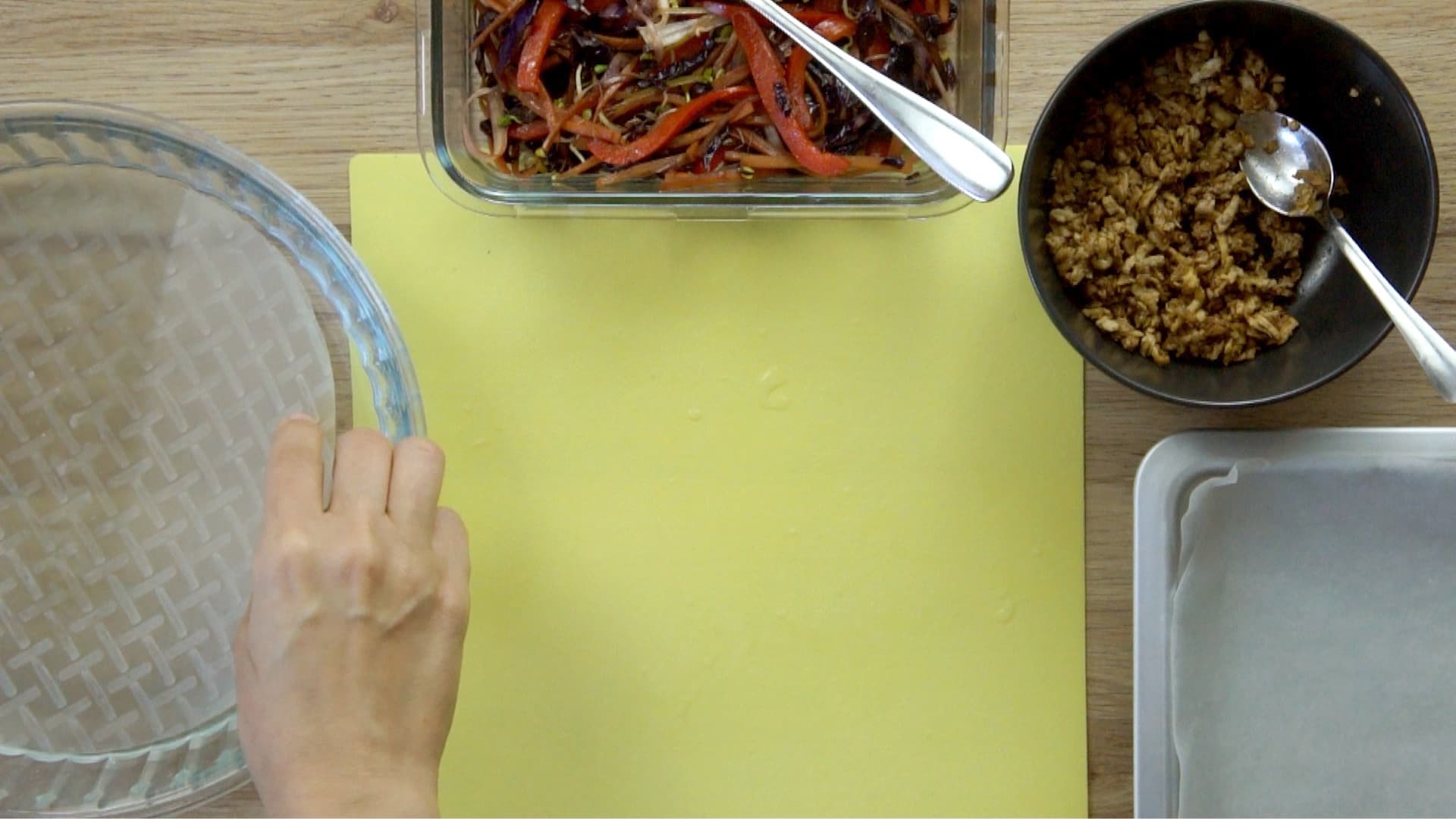
STEP 2
Take out the moistened but still slightly firm rice paper sheet and place it onto a flat work surface. Make sure your sure is dry.
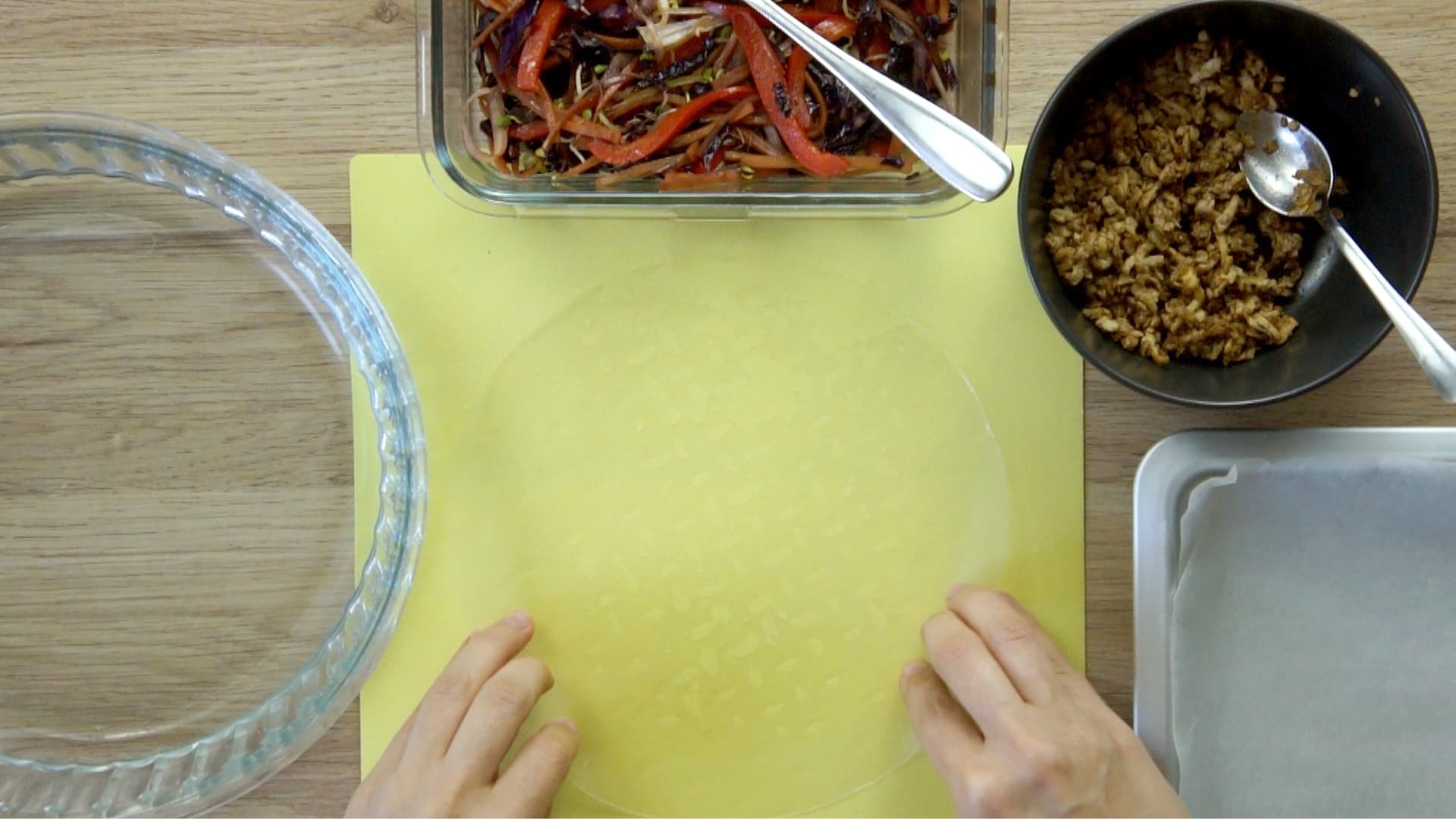
STEP 3
Place the filling in the middle around the lower third of the rice paper. If you have standard-size rice paper (8.5 inches), you can fit 2-3 tablespoons of filling, which would make a 4-inch long spring roll.
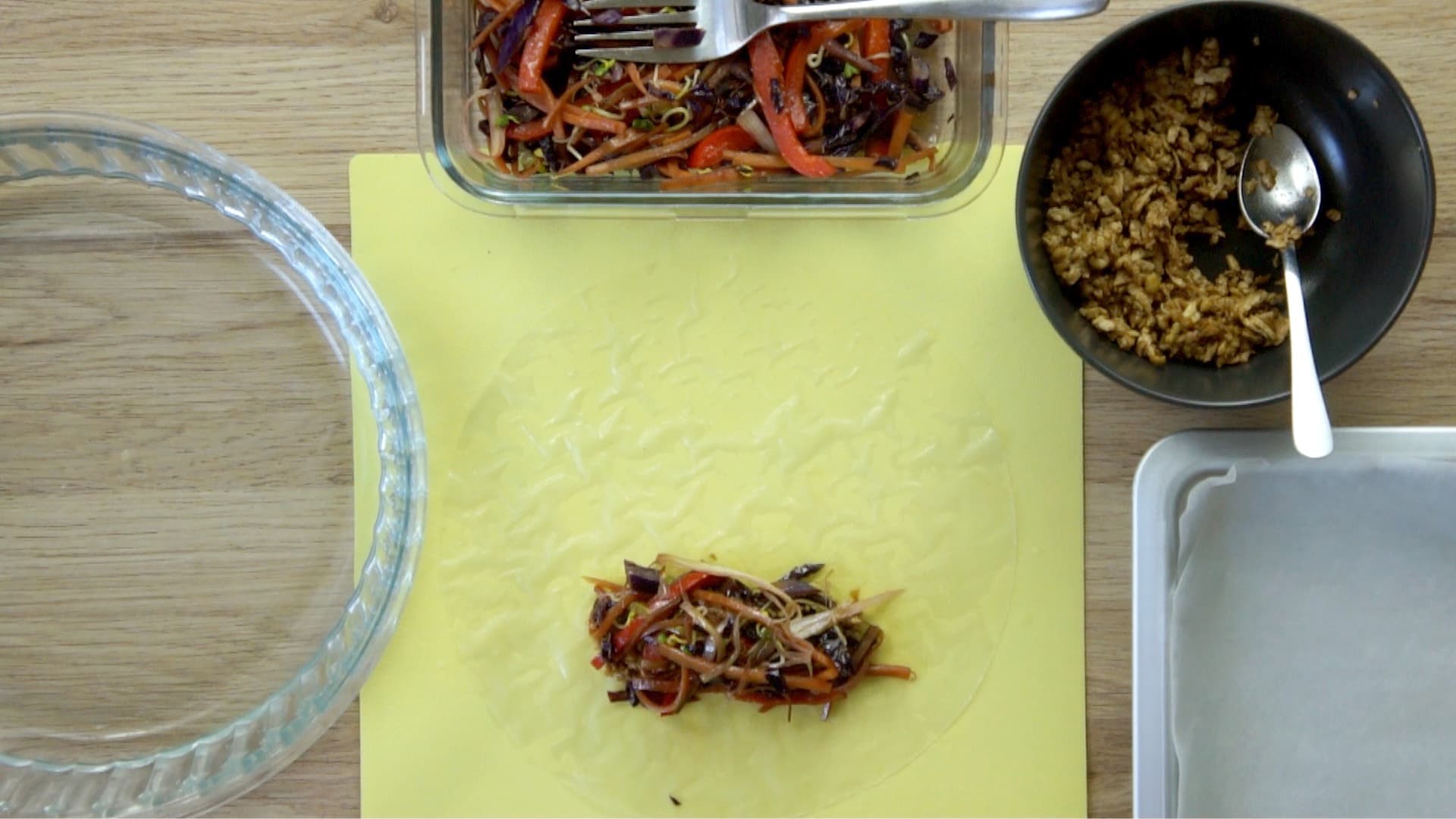
STEP 4
First, fold the sides gently but tightly towards the middle.
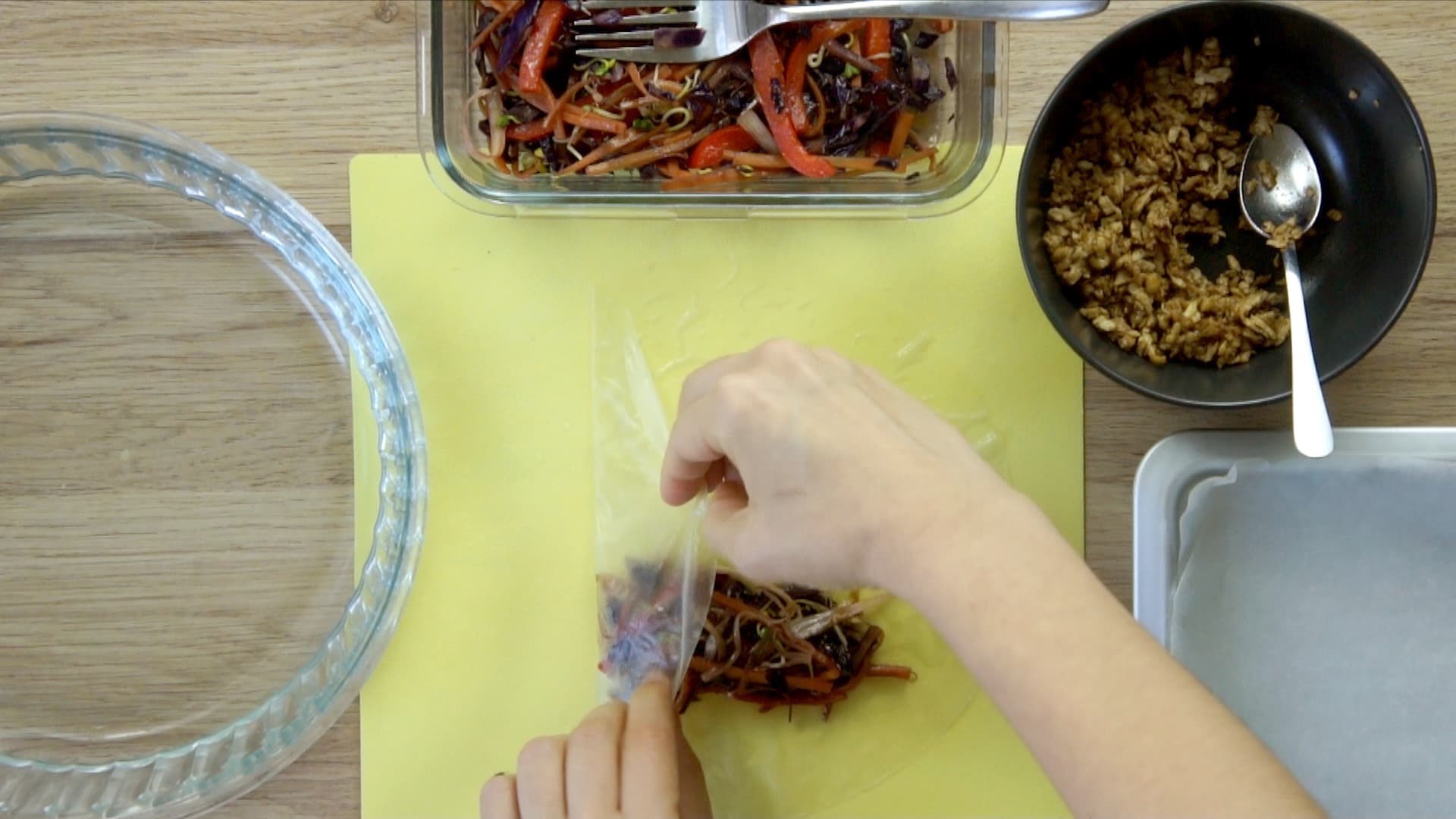
STEP 5
Take the bottom seam and fold it upwards gently but tightly.
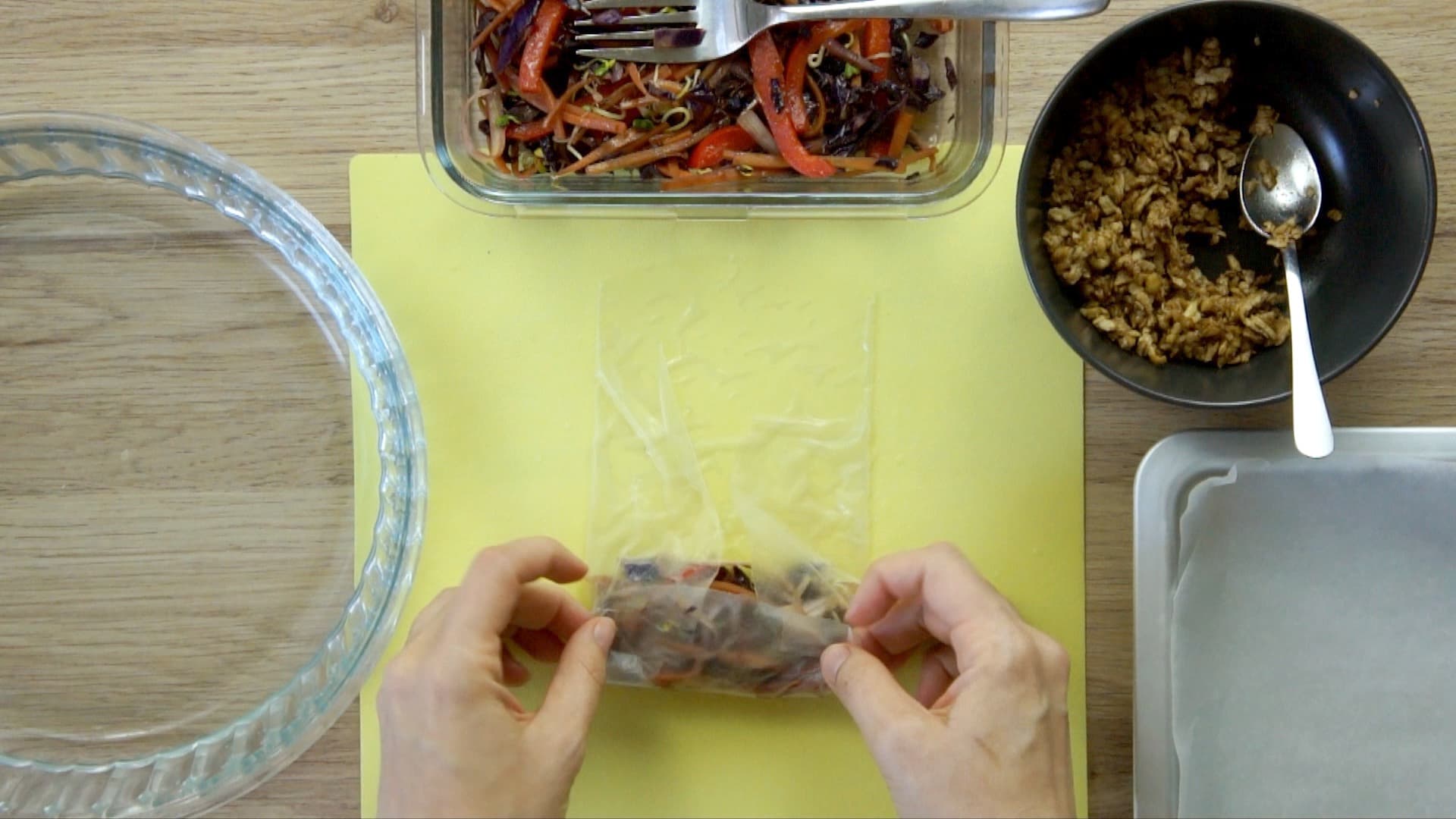
STEP 6
Use your fingers to tuck the filling tightly within the rice paper before rolling it all the way up.
STEP 7
Roll it all the way up, but use your fingers to keep the filling tucked tightly.
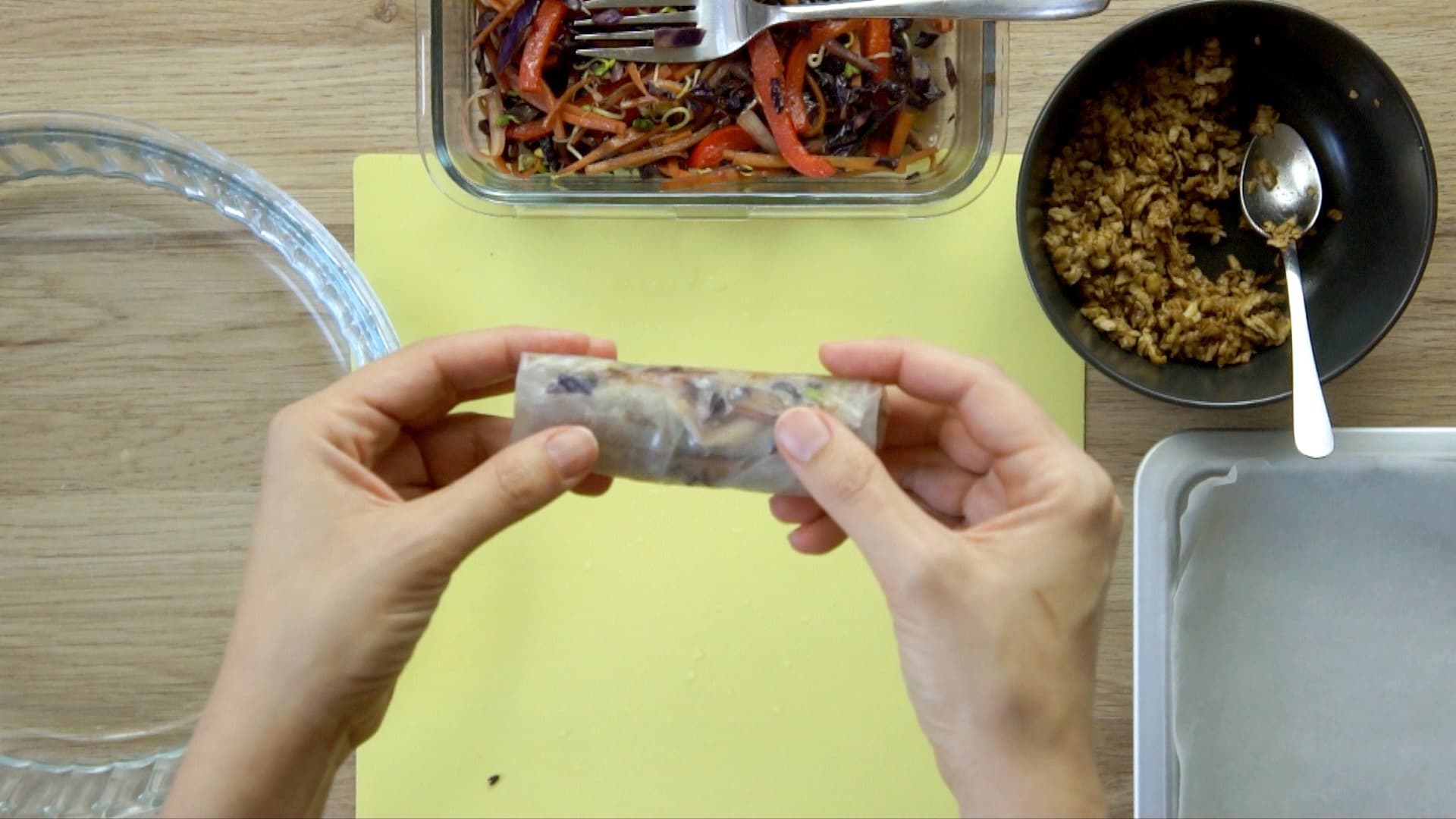
STEP 8
Finally, place your finished spring roll on parchment paper with the closing seam on the bottom. That’s it!
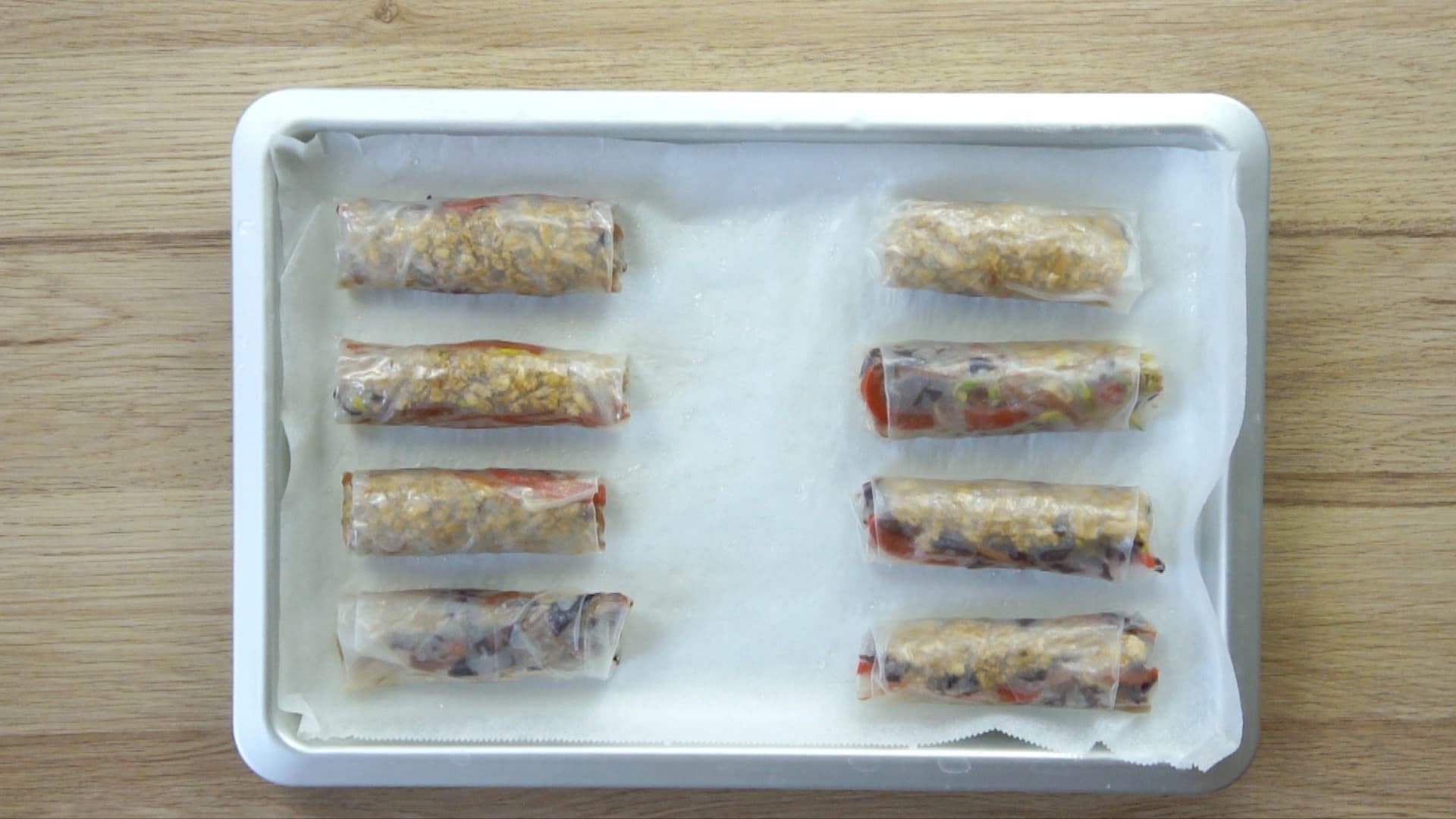
The best rice paper roll recipes
Rice wrappers can be a perfect gluten-free alternative to other types of wrappers used in Asian cuisine like Chinese wheat flour wrappers for spring rolls, lumpia wrappers, wonton wrappers, or even phyllo pastry.
Browse through to find your next favorite among these rice paper recipes.


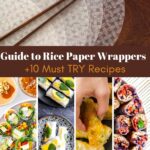
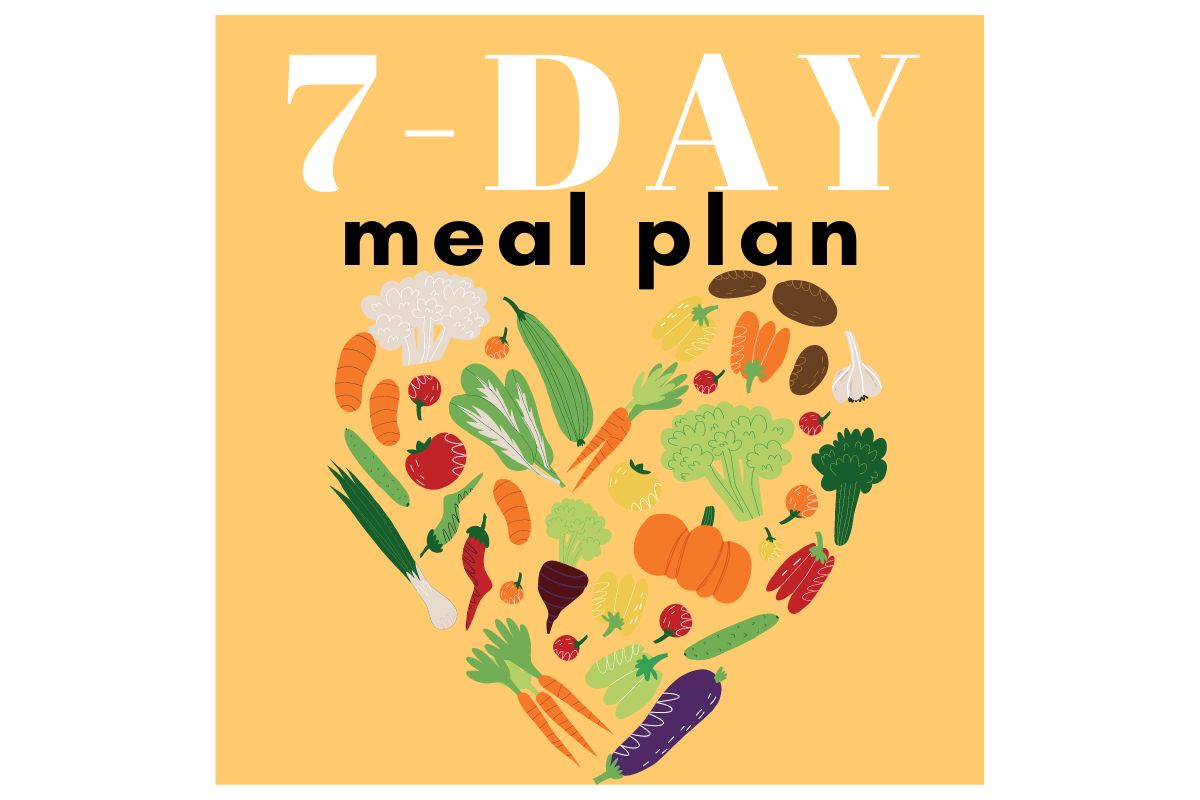
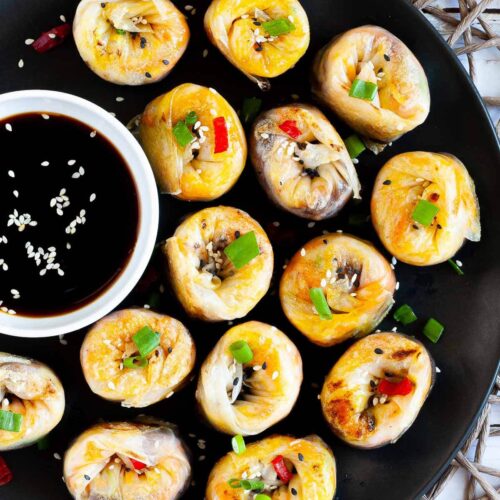
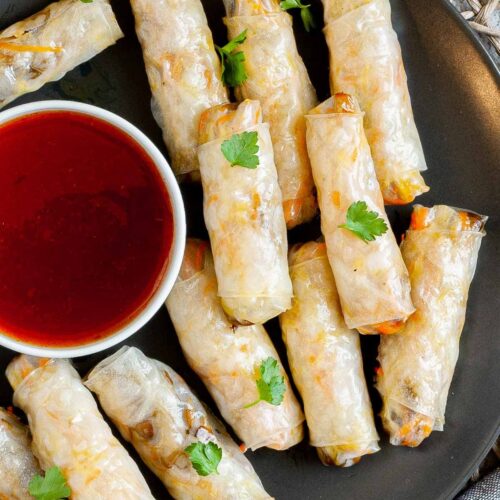
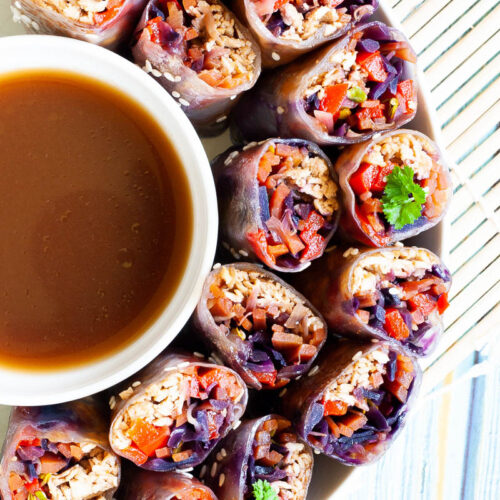
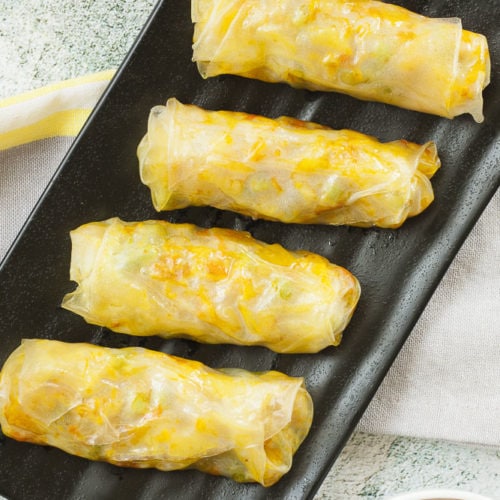
Crystal
You blew my mind when you said use as an alternative to Phyllis dough! I can now figure out how to make Baklava! Any suggestions tips?
Emese
In this recipe for rice paper baklava they are rolled. They will look different, but the taste should be the same.
Mary Angelou
Wow I never realised you could do so many wonderful things with rice paper rolls. All your recipes look amazing and you have taken the time to explain how to cook particular ingredients. Thank you for all us first timers in using rice paper rolls. Much appreciated.
My Pure Plants
Hi Mary, thanks for visiting our website. We are so glad you found this article useful. We love using rice papers so many more recipes to come…